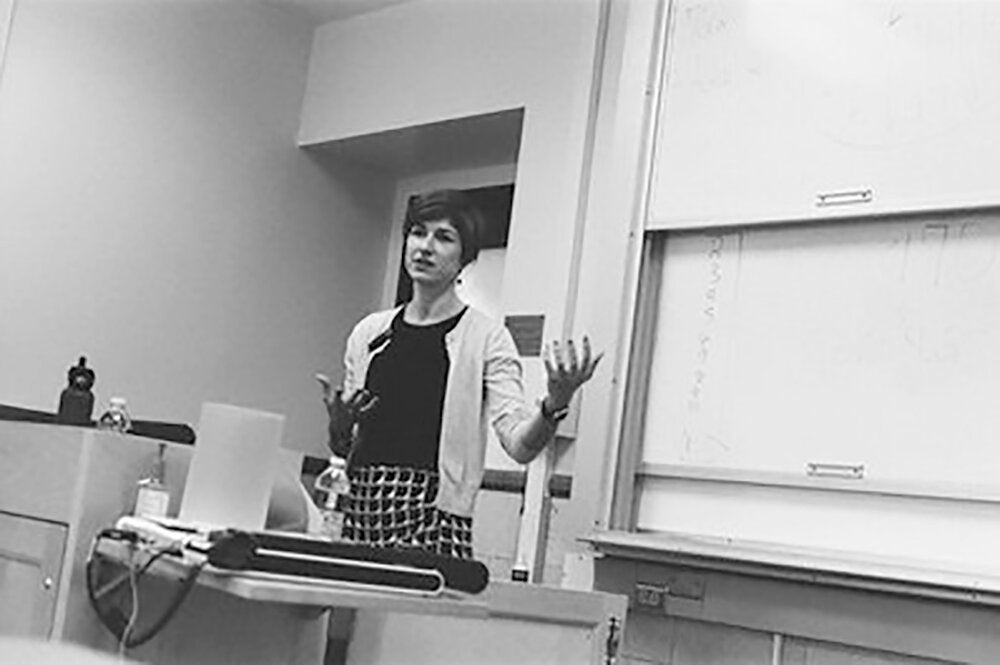

As the U.S. House of Representatives reconvenes this month, adopting rules of procedure are among the first orders of business. Pretty mundane stuff, it would seem—but in fact it determines the very balance of power throughout the entire federal government.
Gisela Sin, a political scientist in the College of LAS, has analyzed more than a century of House procedural rule-making through 2013. Those rules, written by the majority party, have a huge impact on what happens in Washington during the next two years.
They are written not just with the House in mind, as previous scholarship has suggested, but with an eye on the Senate, president, and party factions, and on larger political goals, says Sin.
“When you say ‘rules of procedure,’ it sounds so boring, but these rules basically determine the distribution of power, who can do what,” Sin says. “And by determining who can do what, you are determining outcomes.”
Previous research has focused on House rules as purely an internal matter, for the purposes of internal management, Sin says. But she analyzed 134 years of legislative history and concludes that many House rules are puzzling unless you examine the larger political environment in which House members operate.
In other words, the rules “depend on the game being played” among the House, Senate, and president, as well as among the factions within the House majority, Sin says.
A most recent case in point: January 2011, when the Republicans had a new majority in the House, but Democrats still controlled the Senate and the White House. As part of their rule-making, the Republican leadership abolished the Gephardt rule that had long allowed for an automatic increase in the government’s debt ceiling whenever Congress passed a budget resolution.
This forced House members to vote on this politically unpalatable matter, and gave the more-extreme Tea Party faction more power than their numbers would seem to dictate. The effect was to give the House Republican leadership more leverage in negotiations with the Senate and President Obama, and ultimately more of the budget cuts they wanted, in exchange for raising the debt ceiling.
“If they had not changed this rule, the outcome would have been completely different,” Sin says.
Similarly, House Democrats with a new majority in January 2007 approved “pay-as-you-go” rules that helped them counter tax cut proposals from President Bush. Then that same Democratic majority significantly softened those rules in January 2009, as Obama, a fellow Democrat, was entering the White House.
Sin is a native of Argentina who came to the U.S. as a graduate student, and she believes that has influenced her take on the subject.
“I think a lot of my insights come precisely from being from another country,” she says, and from analyzing U.S. congressional history without any preconceived notions.
Sin thought it didn’t make sense to focus solely on the House, since it can’t make laws on its own. She also saw no analysis of House rule-making that considered factions within the House majority and the leadership’s need to mollify or control them—even though she had seen the significant effect of multiple factions within the two main parties in Argentina.
To illustrate her point, Sin analyzed the famous revolt in 1910 against House Speaker Joseph Cannon, a conservative Republican from Danville, Ill., and considered to be perhaps the most powerful speaker of the House in U.S. history.
The standard view of that revolt against Cannon’s leadership, Sin says, has been that the progressive Republicans who led it had simply grown tired of the speaker’s authoritarian ways. But “Tsar Cannon,” as many knew him, had been speaker for six years, and Sin wondered why those Republicans had waited so long.
Instead, Sin suggests, it was the change of Republican presidents a year earlier that made the difference—a change from the progressive Theodore Roosevelt to the more conservative William Howard Taft. Conservative legislation that had been stymied under Roosevelt was now becoming law, and so progressive Republicans aligned with Democrats to change the rules and restrict some of Cannon’s power.
Significantly, however, those rule changes were relatively modest and Cannon remained as speaker, Sin says. But the effect was that the legislation passing Congress became more moderate.
In other words, the revolt and the rule changes were not just concerned with a speaker’s dictatorial tendencies, but with larger legislative goals, Sin says.
“My explanation is that the change in the president was crucial. Before, they didn’t care about having a dictatorial speaker when that speaker was pushing the bills they wanted. But now that this speaker was pushing very conservative bills, they really cared about that, and that’s why the revolt.”


